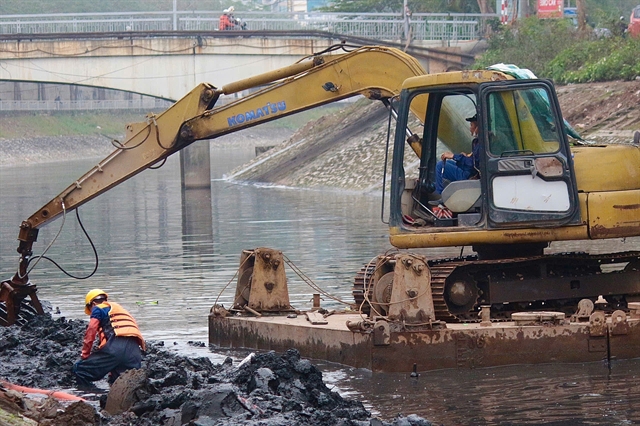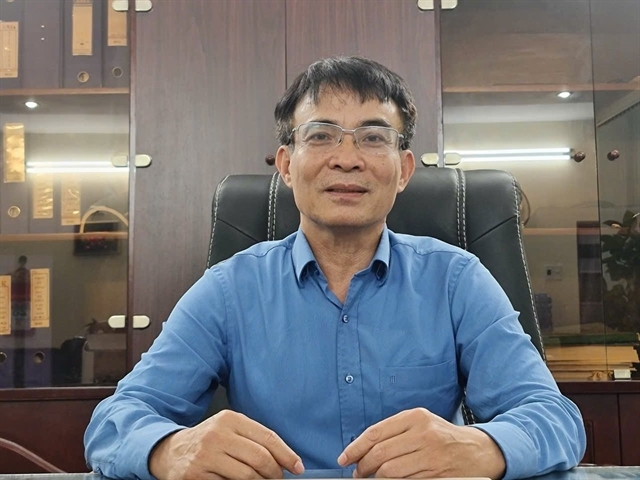
City authorities and environmental experts are calling for a long-term strategy to transform Hà Nội’s growing sludge waste from a costly environmental burden into a valuable resource for sustainable development.
Chairman of the city’s People’s Committee Trần Sỹ Thanh said years of limited dredging had left Hà Nội’s rivers and lakes clogged with sediment, worsening flooding after heavy rain.
He acknowledged that the problem lay not in technical capacity or funding but in the lack of proper disposal sites.
“It’s not that we don’t have the means. The real issue is there’s nowhere legal to put the sludge,” Thanh said.
“Dredging isn’t just about scooping it up and dumping it – it needs proper treatment and storage. Even the West Lake dredging project had to be suspended because there was no approved disposal site.”
Thanh has instructed departments to identify land for a new sludge-treatment plant and attract private investment to build it. The city plans to restart large-scale dredging of rivers and lakes once the facility is in place, aiming to improve drainage, reduce flooding and restore water quality.

Nguyễn Văn Nguyên, former Deputy Director of the Department of Geology and Minerals, said sludge management should be integrated with geological and mineral resource planning rather than treated as a simple sanitation issue.
“We first need to analyse its composition and toxicity. Many types of sludge can be processed for use in agriculture or construction,” he said.
“Japan has long recycled treated sludge into bricks, paving materials and road aggregates. With similar technology, Việt Nam could reduce waste, protect the environment and conserve soil, sand and cement.”
Across developed economies, sludge is increasingly viewed as a resource, not rubbish. The Netherlands uses controlled ‘ripening’ techniques to turn dredged sludge into high-quality soil and clay for dike construction and farmland restoration.
In the US, the Army Corps of Engineers’ Beneficial Use of Dredged Material programme converts sludge into coastal reinforcements and new aquatic habitats. The French port of Dunkerque repurposes dredged material as a roadbed foundation meeting full engineering standards.
“These models prove that sludge, if handled properly, can shift from being an ecological liability to an engine of green growth,” Nguyên said.
He suggested Hà Nội adopt a two-stage strategy: first, classify and test sludge at its source, checking for heavy metals and pollution levels; then invest in advanced treatment technologies such as bioremediation, chemical stabilisation or solidification with cement to ensure safety.
In the next stage, the city should promote research and pilot projects that recycle treated sludge into productive uses, enriching nutrient-poor farmland, producing bricks or ceramics or filling low-lying land to restore degraded areas.
A clear legal framework would also be essential to define technical standards and clarify who would be responsible for dredging, collection and treatment.
“Without firm rules, we’ll continue to see sludge dumped wherever it’s convenient,” Nguyên said.
From the city’s stalled West Lake project to flooded streets after every major downpour, the cost of inaction is becoming clearer.
“The fundamental issue is how we see waste,” Nguyên said.
“We still treat sludge as something to get rid of. The world treats it as a resource. Changing that mindset and investing in technology and regulation could turn this crisis into an opportunity for circular, sustainable urban management.”
He added that sludge did not have to be buried and that, if handled properly, it could become a building block for the kind of circular economy Hà Nội is striving to build.
(VNS)




